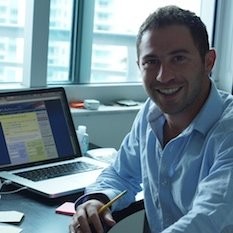PHP Overview
 PHP is likely the most popular scripting language on the web. Often you’ll come across a web page that ends in PHP because the author has written some programming code to liven up the plain, old HTML. PHP is known as a server-sided language. That's because the PHP doesn't get executed on your computer, but on the computer you requested the page from. The results are then handed over to you, and displayed in your browser.
PHP is likely the most popular scripting language on the web. Often you’ll come across a web page that ends in PHP because the author has written some programming code to liven up the plain, old HTML. PHP is known as a server-sided language. That's because the PHP doesn't get executed on your computer, but on the computer you requested the page from. The results are then handed over to you, and displayed in your browser.
PHP code is inserted inside the HTML that makes up a website. When anybody visits a web page that contains the code, the server executes it. Users don’t need any special plug-ins or anything to see your PHP in action — it gets to the end user as regular old-fashioned HTML.
What Can PHP Do?
Parliament's Java Tutoring Program equips students with...
- Take info from web-based forms and use it in a variety of different ways (store it in a database, create conditional pages depending on what the forms said, set cookies for later, send e-mail, write to grandma on her birthday)
- Authenticate and track users
- Run threaded discussions on a site
- Serve different pages to people using different browsers or devices.
- Publish an entire website using just a single layout template.
- Serve XML pages
Why Should I Learn PHP?
One of the reasons PHP is so popular is its simplicity. You can begin to write simple scripts in PHP just a few hours after you start learning it. While PHP is extremely simple for a newcomer, it offers many advanced features for a professional programmer as well. Additionally, PHP is a great tool to enhance web pages. With PHP, you can do things like create username and password login pages, check details from a form, create forums, picture galleries, surveys, and a whole lot more. Get started learning PHP with Parliament today!













